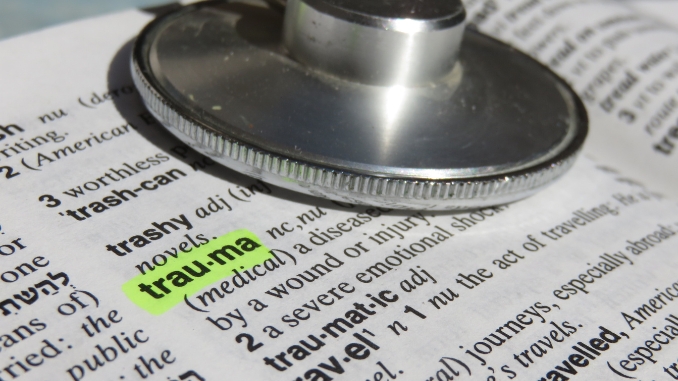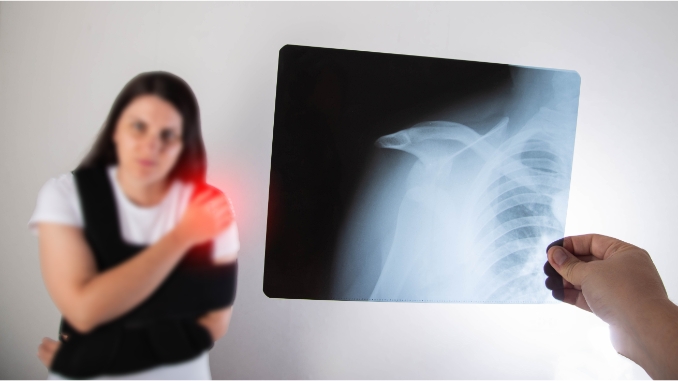What is a Trauma Injury or Traumatic Injury?

A trauma injury, from accidents to falls, causes sudden harm. Multiple injuries, such as broken bones, cuts, and bruises, are just some possibilities. These unpredictable events can be severe, highlighting the need for prevention and immediate medical attention.
Trauma can also impact the spine and cause soft tissue damage like strains. These traumatic injuries often require medical attention and can lead to emotional distress. Recovery varies depending on the injury, and medical professionals play a critical role in the process.
7 Types of Traumatic Injuries

1. Blunt Force Trauma
Blunt force trauma results from the impact of an object or force on the body, causing injury without breaking the skin.
This type of trauma often occurs when an individual is struck by an object, leading to fractures and broken bones. Unlike penetrating injuries, where the skin is breached, this trauma leaves the skin intact but causes significant damage to internal structures, such as bones.
Blunt trauma includes falls, being hit by a blunt instrument, motor vehicle accidents, or experiencing a forceful collision. The severity of blunt trauma ranges from small bruises on the body to severe fractures and internal organ damage.
2. Penetrating Trauma
This trauma arises when an object breaches the skin and underlying tissues, leading to injuries such as gunshot wounds, stab wounds, or fractures where sharp bone ends puncture the skin.
Penetrating trauma involves a direct entry into the body's interior. These types of trauma can cause long-lasting scars and injuries; some might not even recover at all, and others might require surgery.
It involves shooting, stabbing, and other acts that would require immediate medical attention. Severely injured patients are brought to the trauma center for treatment, which could mean life and death for the trauma patients involved.
3. Burn Injuries
Burn trauma occurs when the body is exposed to excessive heat, chemicals, electricity, or radiation, leading to injuries categorized by degrees of severity.
These burns can result from various sources, such as fire, hot surfaces, corrosive substances, electrical currents, or prolonged exposure to the sun. The severity of burns is classified into degrees, ranging from first to second and third.
First-degree burn injuries sustained from accidents involve damage to the outer layer of the skin. Second-degree burns affect deeper layers and increase pain. Third-degree burns, experienced by the most severely injured patients, cause numbness due to nerve damage and permanent skin damage.
4. Orthopedic Injuries

5. Head and Brain Injuries
Head trauma, as the name suggests, results from a powerful impact on the head, potentially causing a spectrum of injuries. These can range from mild traumas to severe traumatic brain injuries (TBIs).
Head trauma often occurs due to accidents, falls, sports-related incidents, or other situations where the head experiences significant force. Mild cases may manifest as temporary confusion or headaches, while severe instances lead to long-term cognitive impairment or even life-threatening consequences.
These types of injuries can be counted as a form of mental or physical injury, depending on the damage. Recognizing the symptoms of head trauma, such as dizziness, nausea, or loss of consciousness, is crucial for seeking prompt medical attention.
6. Spinal Cord Injuries
Spinal cord trauma is triggered by a significant impact that damages the spinal cord, often leading to a complete or partial loss of sensation and motor function below the injury site.
Common consequences include paralysis, loss of reflexes, and challenges with bodily functions. Appropriate medical intervention is crucial to underrate further damage and optimize the chances of recovery. The condition may range from minor to moderate to serious, severe to critical to maximal.
7. Psychological Trauma
Psychological trauma, though not physically visible, stems from distressing events like natural disasters, wars, or accidents, exerting a profound impact on a person's mental health.
This form of trauma can manifest in various ways, altering individuals physically, psychologically, and emotionally. Symptoms may include anxiety, depression, flashbacks, and changes in behavior.
Recognizing the signs and addressing psychological trauma through appropriate mental health support is crucial for fostering resilience and recovery. While it might not be very high in the injury severity score, trauma centers acknowledge how detrimental psychological trauma is to trauma patients.
The impacts of this trauma can be long-lasting, influencing how individuals cope with stress and navigate their daily lives.
Immediate Response and First Aid

Regarding trauma injuries, the first moments after an accident or injury are crucial, and taking quick action can make a meaningful difference in the outcome.
A swift response is important in preventing further harm and ensuring the best chances for recovery. In these urgent situations, basic first aid measures play a vital role.
If the trauma is prolonged, the patient should be delivered to the medical or trauma center for an immediate scan. Vital as it is, professionals should have the last word.
According to pediatric trauma surgeons, in a traumatic situation, things are different for adults and children. This revolves around what to do when someone is in physical trauma.
For adults, it is to provide clear information and encourage communication between them and medical staff. While for children, staff should reassure and comfort them using simple words and language that will not agitate them.
Understanding the appropriate first aid measures for different types of injuries is essential—it empowers individuals to provide instantaneous assistance until professional help arrives. Training in basic first aid equips people with the knowledge and skills needed to be effective first responders in emergencies, fostering a safer and more prepared community.
Psychological Impact of Trauma

The psychological consequences of trauma refer to the emotional and mental effects experienced by individuals who have experienced disastrous events. Such impact can manifest in various ways, including:
Stress
Stress is the body's natural response to a perceived threat or danger. In the context of trauma, stress can result from the overwhelming emotional and physical experiences associated with a traumatic event.
Trauma-induced stress can manifest as heightened arousal, difficulty concentrating, restlessness, irritability, and physical symptoms such as headaches or stomach aches. Individuals may feel constant unease or be easily triggered by reminders of the traumatic event.
Anxiety is an overwhelming feeling and excessive worry or fear about future events. It often occurs with physical symptoms like increased heart rate, trembling, and restlessness.
Trauma can cause heightened levels of anxiety, as individuals may develop a heightened sense of vulnerability and a fear of similar traumatic experiences occurring again.
Anxiety can interfere with daily functioning and relationships, making it challenging for individuals to engage in normal activities without a sense of apprehension.
Depression
Depression is a mood disorder characterized by persevering feelings of hopelessness, heartbreak, and a lack of interest or pleasure in activities.
Trauma can add to the development of depression, as individuals may struggle with feelings of grief, loss, and a sense of hopelessness.
Trauma survivors may find it challenging to derive joy from previously enjoyed activities and may experience disruptions in sleep, appetite, and overall energy levels.
Dissociation
Dissociation involves a disconnection between thoughts, identity, consciousness, and memory. It is a defense mechanism that the mind employs to cope with overwhelming trauma.
Trauma survivors may experience dissociation as a way to escape from the traumatic event mentally. This can manifest as a sense of detachment from one's body or a feeling of being emotionally numb. While dissociation can provide temporary relief, it can also interfere with your daily functioning and the ability to form and maintain relationships.
PTSD is a severe and persistent psychological response to trauma characterized by intrusive thoughts, nightmares, flashbacks, and avoidance of reminders associated with the traumatic event.
Trauma survivors with PTSD may re-experience the traumatic event through intrusive memories or nightmares, leading to intense emotional and physical reactions.
Avoiding situations or things that remind someone of trauma can cause them to withdraw from social interactions and become isolated. Hyperarousal symptoms, such as exaggerated startle response and difficulty concentrating, are also common in individuals with PTSD.
The psychological aftermath of trauma may influence a person's thoughts, emotions, and behavior, often requiring therapeutic interventions and support to navigate and mitigate these problems. Understanding the psychological impact is crucial for developing comprehensive approaches to healing and recovery after traumatic experiences.
Conclusion
Trauma injuries, from bumps to burns and emotional distress, demand immediate attention and comprehensive care. Their impact can be long-lasting.
Recognizing various injuries and taking the right steps, from first aid to specialist help, is vital for optimal recovery. The unique nature of each injury, like broken bones or brain damage, requires a personalized treatment plan.
Understanding trauma fosters empathy, resilience, and better care. By creating safer environments and offering support, we can all contribute to healing.
Don't wait until it is too late! Take control of your brain health now with the 14-Day Brain Health Quick Start Program!








